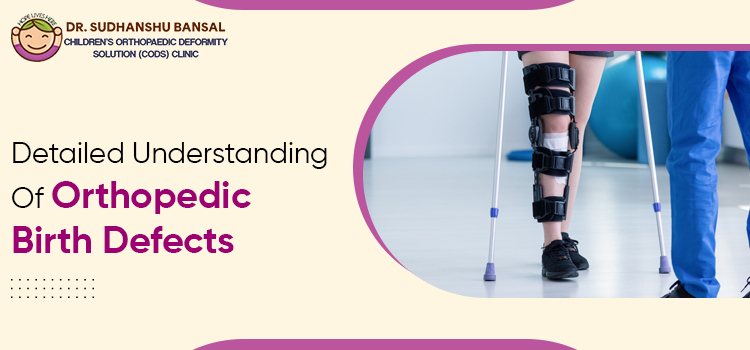Orthopedic Birth Defects Understanding For Parents
Orthopedic birth defects are not just merely dependent on one condition. It’s the various problems and issues to the muscles, bones, ligaments, and tendons, as these parts are interlinked. The chances of having the problem are higher when the baby is present in the uterus. There’s even a possibility that the birth defects get addressed independently, and some children won’t need treatment. Although, in some cases, if not treated on time, then it increases the possibility of complications like:
- Problem running and walking
- Bone destruction
- Bone, muscles, limbs, and joints deformities
- Chances of arthritis in later life
Considering all these reasons, it’s important to consult the Best Pediatric Orthopedics Doctor and plan for conclusive Bone treatment in Ludhiana to improve the situation.
Types of orthopedic birth defects
Birth defects are a common concern in babies during the development stage. Not treated on time increases the chances of causing severe health conditions. The most common types of orthopedic birth defects are:
- Spine deformity like scoliosis (twist noticed in the side curvature) and bowing (kyphosis)
- DDH (Developmental Dysplasia of Hip) and hip being dislocated
- Osteogenesis imperfecta: Brittle-bone disease
- Muscular dystrophy – The problem occurs in the skeletal muscles
- Curved foot (metatarsus adductus that impacts the foot health)
- Limb defects (legs or arms are not able to develop properly or it has the chances of being missed out)
- Bone infection
Symptoms of orthopedic birth defects
Usually, the symptoms of orthopedic birth defects are not visible right away. That means it might take some time to develop. When it happens, the possible signs and symptoms are noticed like:
- Bones become weak as they can break easily
- The problem is visible with the baby’s feet, arms, hands, and legs
- Spine bowing, curvature, and twisting
- Infants have a problem walking, or overall body movement gets less
Do you know?
The exact cause behind orthopedic birth defects is not known. There are a few common risk factors that can occur are:
- Toxins that are derived from smoke, alcohol, drugs, medications, radiation, and chemicals
- Maternal infections like chicken pox, german measles, cytomegalovirus
- Genes are not right to be inherited from parents
- Maternal conditions like thyroid, heart disease, high blood pressure, and diabetes affect the ortho well-being
Diagnosis of orthopedic birth defects
Diagnosing orthopedic birth defects is based on the types, symptoms, and other factors. It’s the combination of everything that allows you to get the right diagnosis and see what needs to be done next. Some of the tests performed to diagnose orthopedic birth defects are:
- Diagnostic imaging like CT, MRI scan, and ultrasound
- Urine and blood test to check the infection or enzyme deficiency
- X-ray to see the bone problem
- Genetic testing
- Biopsy to check the bone
Treatment of orthopedic birth defects
When you visit the healthcare provider, he will check the condition and tell you about a reliable treatment plan that works effectively against that situation. Some of the best treatment options are:
- Physical therapy – increases overall muscle strength and motion
- Braces, casts, or splints
- Occupational therapy
- Surgery – only if the problem is adverse








